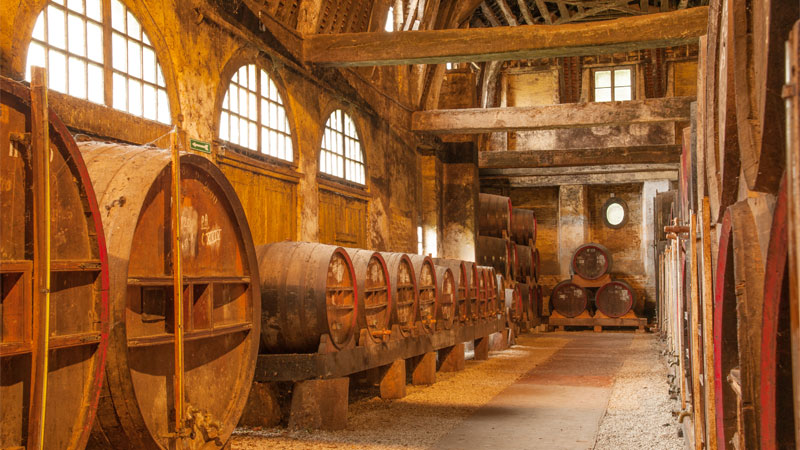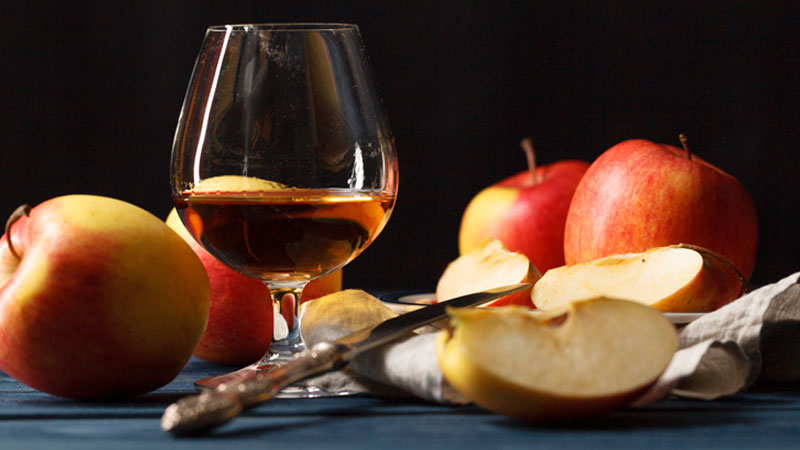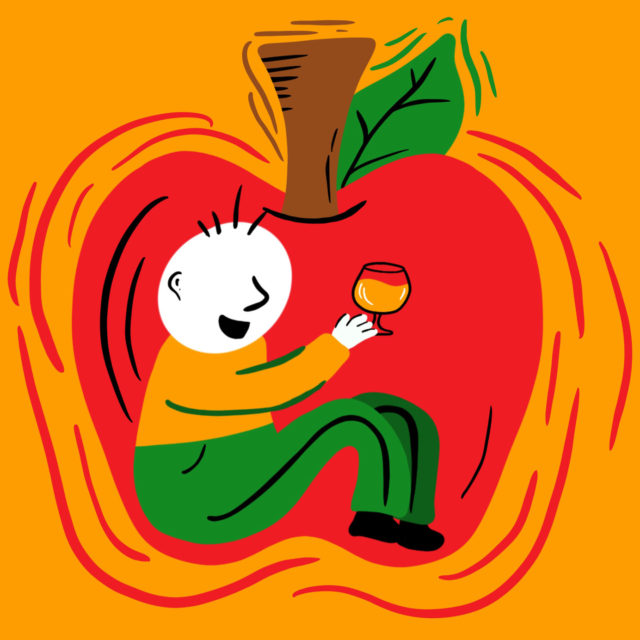The turning leaves and crisp winds of fall are perfect excuses for brandy aficionados to reach for their favorite spirits. While Cognac is the most popular brandy in America, its versatile cousin Calvados, made from distillations of apple and occasionally pears, is a versatile, food-friendly option with a strong seasonal potential.
Like its grape-based cousin, Calvados is classified as a brandy. In order for a brandy to be legally called Calvados, it must be made in Normandy, a region in northwest France famous for its apple orchards.
Normandy is divided into three Calvados-producing sub-regions: Calvados, Calvados Pays d’Auge, and Calvados Domfrontais. While the Pays d’Auge is the most famous, spirits from the Domfrontais sub-appellation feature a unique blend that includes at least 30 percent pears.
According to Karen MacNeil’s “The Wine Bible,” the nearly 800 types of heirloom apples that grow in Normandy fall into four flavor categories: sweet, bittersweet, acidic, and bitter. With so many different types of cider apples in Normandy, each Calvados producer has their own proprietary blend and resulting flavor profile. A typical Calvados producer might grow between 20 and 25 varieties of cider apples, and combine the fruit in varying proportions.
After harvest, which typically takes place between mid-October and December, the fruit is pressed and the juice fermented from one to three months. The resulting product, a dry cider, can be single-distilled in a column still or double-distilled in a pot still depending on the regulations of its respective appellation. Once distilled, Calvados must be aged in oak casks for a minimum of two years, except in the Domfrontais region where it is aged for at least three years.

While it’s customary to sip Calvados straight — or stir it into your morning coffee! — in Normandy, many American bartenders extoll its versatility as a cocktail ingredient. Judson Winquist, co-owner of Normandie, a French-inspired restaurant in Portland, Ore., believes Calvados occupies a crowd-pleasing middle ground between heavier oaked American whiskeys and lighter tequilas and gins. Nearly 40 percent of Normandie’s menu is devoted to Calvados-based cocktails, such as a Calvados Spritz and Cobbler made with manzanilla sherry.
When Winquist introduces Calvados to guests unfamiliar with the spirit, he often finds that Calvados defies their preconceptions. Most people underestimate Calvados’s subtlety, anticipating something much more intensely sweet with a concentrated apple flavor.
New York Times wine critic Eric Asimov suggests serving Calvados in a white-wine glass rather than the more traditional option, an oversized balloon snifter. But for some drinkers, enjoying Calvados may be less about what glass you use than with whom you share a drink.
When asked about his favorite way to drink Calvados, Winquist replied, “Neat, at home with my wife after work.”

Four Calvados Bottles to Try
Christian Drouin Selection Calvados
A light and youthful Calvados with notes of fresh apples, vanilla, and cinnamon, rounded out by a slightly smoky finish. Also great for use in cocktails. Average Price: $34.
Boulard V.S.O.P. Pays d’Auge Calvados
A complex blend of 4- and 10-year old Calvados that offers baked fruit, honey, and almond notes. Average Price: $44.
Lemorton Reserve Calvados
Hailing from the Domfrontais region, where clay and limestone soils are dominant, this Calvados is produced from 70 percent pears and presents a balanced yet rich spirit. Average Price: $57.
Pere Magloire X.O. Calvados Pays d’Auge
A brighter option with notes of caramel and baked apple, perfect for those who prefer a less-oaked Calvados. Average Price: $63.
